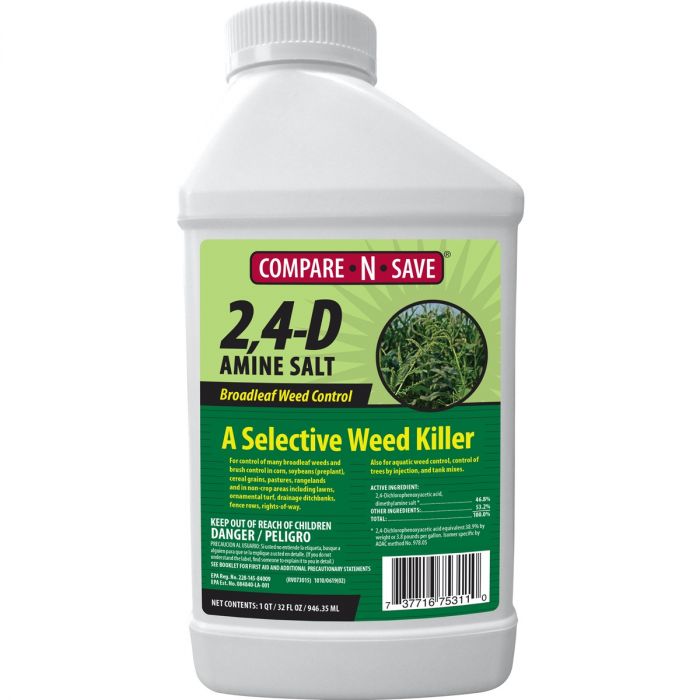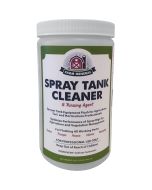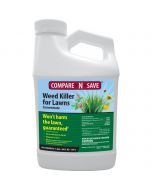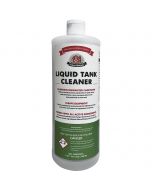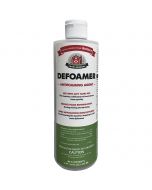2,4-D Broadleaf Weed Killer
Keep Your Crops And Turf Safe From Broadleaf Weeds
Whether you’re a grower of corn, soybeans, small grains, pastures, rangelands or other crops, or you just want to cultivate healthy turf on your homestead, we have what you need to protect your crops from invasive broadleaf weeds.
This product is a water-dilutable amine especially prepared for use on crops and weeds where a susceptible crop in the near vicinity may be injured by a more volatile product. It is recommended for control of numerous broadleaf weeds and certain 2,4-D susceptible woody plants without injury to most established grasses.
Where to use:
For control of many broadleaf weeds and brush control in:
| Corn | Small Grains | Rangelands |
| Soybeans | Pastures | Other listed crops |
In cropland, 2,4-D is more effective than amines for controlling hard-to-kill weeds such as bindweed, thistle, smartweed, wild garlic, curly dock, tansy ragwort and wild onions.
For selective weeding in non-crop areas such as:
| Lawns | Rights-of-way | Roadsides |
| Vacant Lots | Athletic fields | Parks |
| Sod farms and similar turf areas | Industrial Sites | Drainage ditch banks |
| Cemeteries | Airfields | Utility power lines |
| Ornamental turf (residential, industrial and institutional) | Golf courses (fairways, aprons, tees and roughs) | Fence rows |
| Railroads |
Also for aquatic weed control, control of trees by injection and tank mixes.
When to use:
For best results, apply this product as a water or oil spray during warm weather when young, succulent weeds or brush are actively growing.
Application under drought conditions often will give poor results.
The lower recommended rates will be satisfactory on susceptible annual weeds. For perennial weeds and conditions such as the very dry areas of the western states, where control is difficult, the higher recommended rates should be used.
How to use:
General Weed Control
Use 0.5 gallon of product per acre (2.9 tablespoons of this product per 1,000 sq. ft.). Use sufficient amount of total spray—water plus chemical— for thorough and uniform coverage. Apply when most annual broadleaf weeds are still young and growing vigorously. Apply when perennial and biennial weeds are actively growing and near the bud stage, but before flowering. Thoroughly wet weeds when applying this mixture.
General Weed Control Precautions: Do not use on herbaceous ground covers or creeping grass such as bent. Legumes will usually be damaged or killed. Deep-rooted perennials such as Bindweed, Whitetop, Perennial sowthistle, Blue lettuce, Nettle, Bur ragweed, Canada thistle and other noxious perennials somewhat resistant to 2,4-D may require repeat applications to kill. Do not use on freshly seeded turf until grass is well established. Delay reseeding for 30 days.
Post-emergence (annual and perennial weeds): Limited to 2 applications per year. Maximum of 4.25 pints of product per acre (3.1 tablespoons of product per 1,000 sq. ft.) per application. Minimum of 30 days between applications.
Post-emergence (woody plants): Limited to 1 application per year. Maximum of 8.25 pints of product per acre (6.0 tablespoons of product per 1,000 sq. ft.) per year.
Ornamental Turf Lawns
Use 2 to 4.2 pints of product per acre per application per site in 40 to 180 gallons of water (1.4 to 3.0 tablespoons of this product per 1,000 sq. ft. per application per site in 1 to 4 gallons of water) to give good coverage to one acre on established stands of perennial grasses. Usually 4 pints per acre (2.9 tablespoons per 1,000 sq. ft.) provides good weed control under average conditions. The maximum number of broadcast applications per treatment site is 2 per year.
Treat when weeds are young and actively growing. Do not apply to newly seeded grasses until well established. Use higher rate for hard-to-kill weeds. Use higher rate when using higher volume of water per acre. Do not exceed specified application dosages for any area.
Ditch banks: For shoreline weeds, allow no more than 2 ft. overspray onto water.
Applications to non-cropland areas are not applicable to treatment of commercial timber or other plants being grown for sale or other commercial use, or for commercial seed production, or for research purposes.
ORNAMENTAL TURF LAWNS PRECAUTIONS:
Do not use on creeping grasses such as bent and St. Augustine and centipede — except for spot treating — or on newly seeded turf until grass is well established. Limited to 2 applications per year. Maximum of 3.25 pints of product per acre (2.3 tablespoons of this product per 1,000 sq. ft.) per application. The maximum seasonal rate is 6.25 pints of product per acre (4.5 tablespoons of this product per 1,000 sq. ft.) excluding spot treatments.
Precautions:
Do not apply this product through any type of irrigation system. Do not use in or near a greenhouse. Do not apply this product in a way that will contact workers or other persons, either directly or through drift. Only protected handlers may be in the area during application.
Active Ingredients:
| Dimethylamine salt of 2.4-dichlorophenoxyacetic acid | 46.80% |
| Other Ingredients | 53.20% |
| Total: | 100.00% |
Product Label:
Disclaimer:
It is a violation of Federal law to use this product in a manner inconsistent with its labeling. Read the entire label before each use. Use only according to label instructions.
See the complete label for specific use rates and detailed instructions.
Consult the Safety Data Sheet (SDS) for important safety information.

